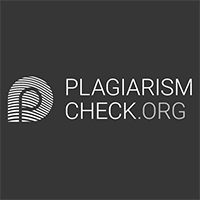Plagiarism is a major problem for online websites, bloggers, journalists, educators, and much more. This has led to an increase in the number of online plagiarism checking tools, such as PlagiarismCheck.org, which is the service I would like to review today.
When I first went to University in 1996, the internet was not as integrated into our lives as it was back then. You could still find a lot of great information online, but resources such as Wikipedia were still five years away. Of course, plagiarism still existed, but the university was more concerned with you copying from books or Microsoft Encarta, than copying content from websites.
Since I started working on the internet in 2000, plagiarism is something that I have had to tackle. In the early days, RSS scrapers copied content from my blogs and published them as their own, and the search engines weren’t tackling them at the time.
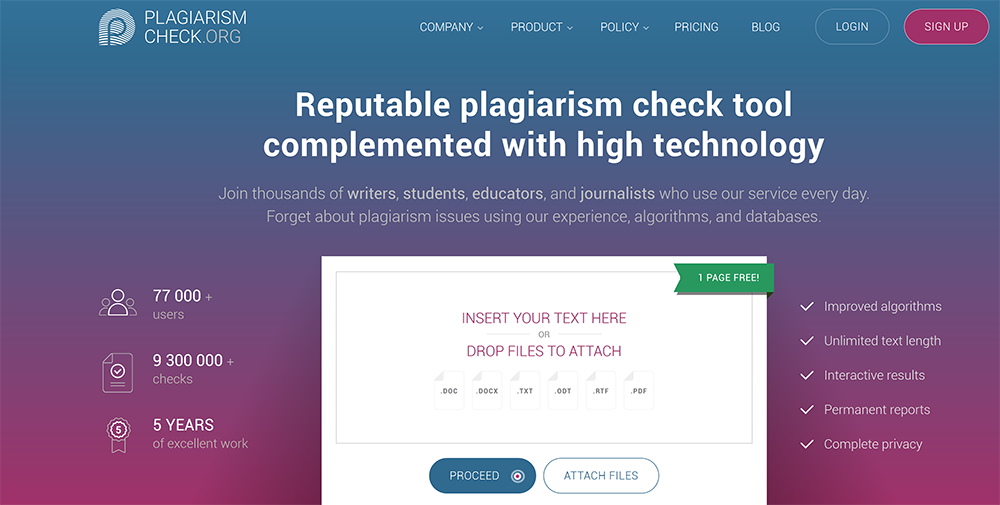
Today, the biggest problem I face comes from those who write for me. Whether an article is paid or submitted to me free of charge as a guest post, I need to check whether the content has been copied elsewhere. It is unfortunate that I need to do this, but you would be surprised at the number of bloggers and SEO agencies that submit articles that have been published elsewhere or just changed a few words from an existing article.
This is where a service such as PlagiarismCheck.org comes in very useful. The service uses advanced algorithms to check whether an article has been plagiarised and provides a report about it. It has found popularity among website owners, institutions, teachers, and students.
Let’s take a closer look.
How Does PlagiarismCheck.org Work?
PlagiarismCheck.org was launched in 2001 as a teacher’s tool. To date they have tested over nine million pieces of work.
The service is very easy to use.
All you need to do is paste your text or upload your text in one of several formats, such as doc, docx, txt, odf, rtf, or pdf. PlagiarismCheck.org then checks the text across all accessible pages on the internet and detects exact matches and paraphrased text.
Plagiarised parts of your text are then highlighted in a report. This report can also be downloaded in pdf format.
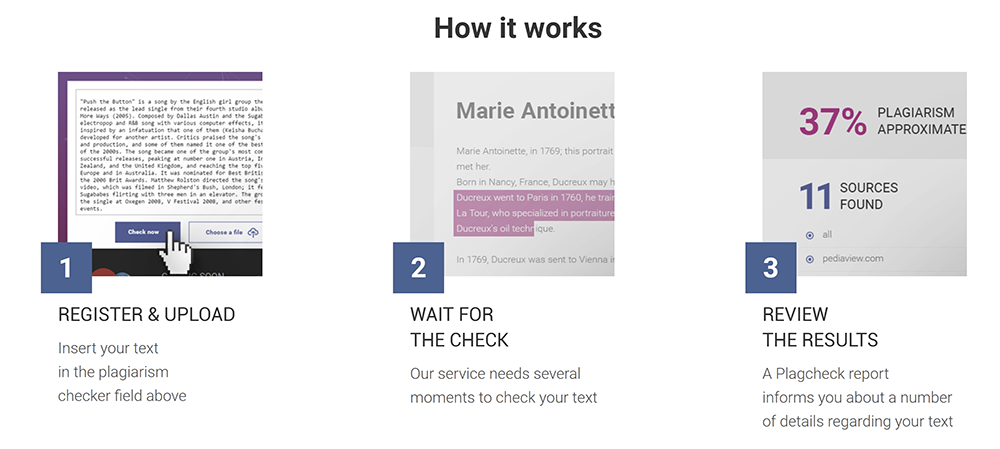
They detect plagiarism in a number of ways. This includes:
- Exact matches in word order
- Rearrangements of word order and sentence structure
- Words that have been replaced with synomymns
- Changing the voice from active to passive and passive to active
These detections help you find plagiarised content, even if someone has changed parts of the text and structure around to make it look original (manually or via software).
Checking for Plagiarism
PlagiarismCheck.org is a premium service with pricing starting from $0.30 per page, however you can sign up for an account free of charge and test one page. This will help you get a better understanding of how the service works.
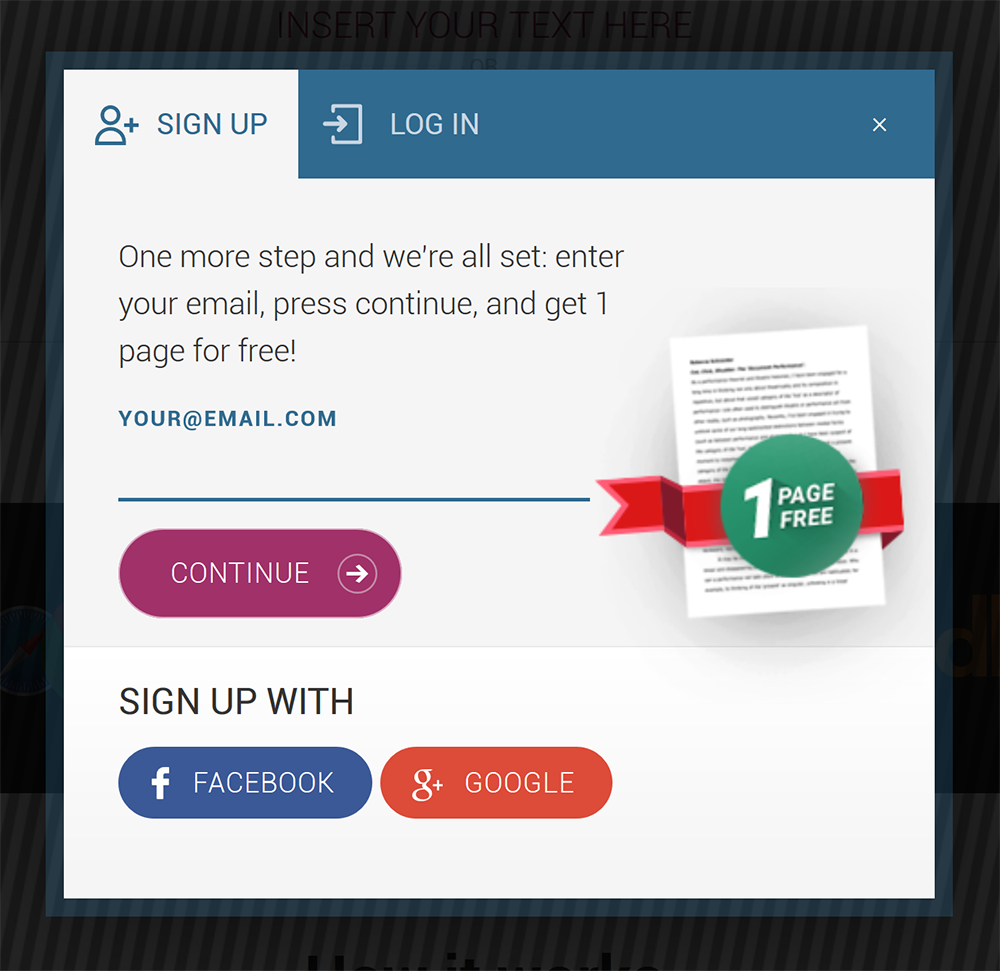
The account area allows you to see the documents you have uploaded previously and change your account password. You can also see how many pages you have left in your balance.
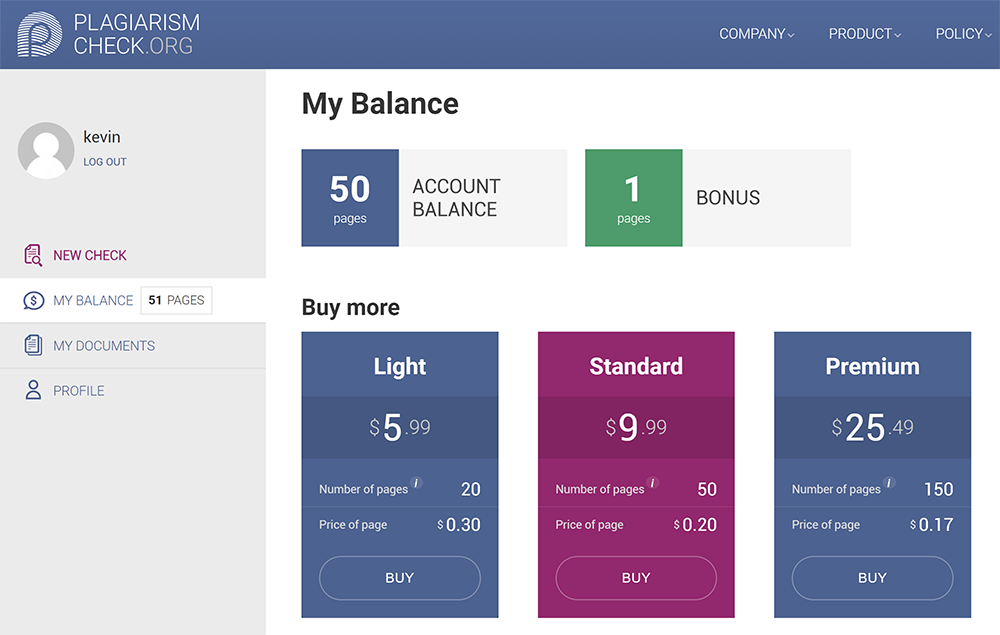
A new check can be performed by copying and pasting the content into the main area. Alternatively, you can upload your content in a number of different formats.
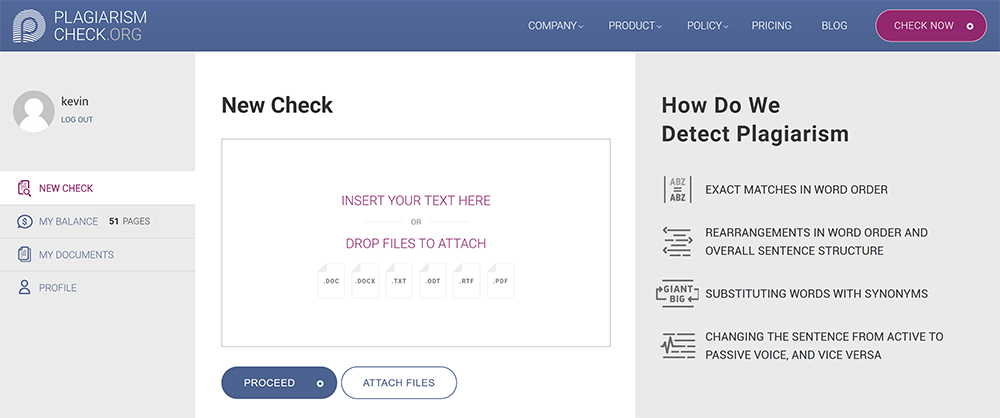
To test PlagiarismCheck.org, I copied the text from an old article of mine entitled “Eleven Reasons Affiliate Marketing Sucks“.
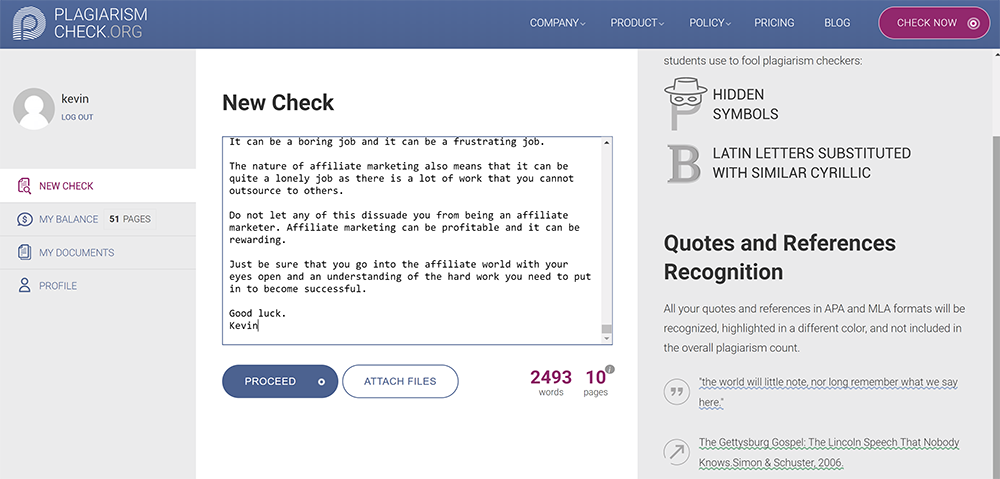
It stated that my article was 2,493 words long. This was calculated as 10 pages at 275 pages per word.
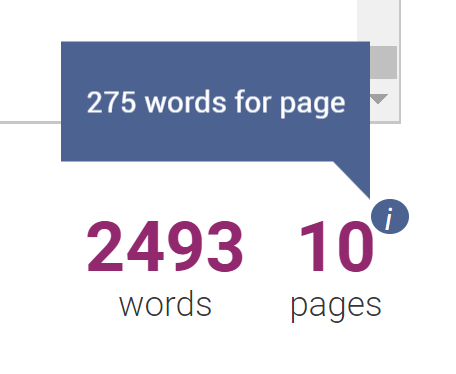
After clicking to proceed, you will be given an opportunity to see your balance and see how many pages this check will cost you. If you’re happy, you can continue.
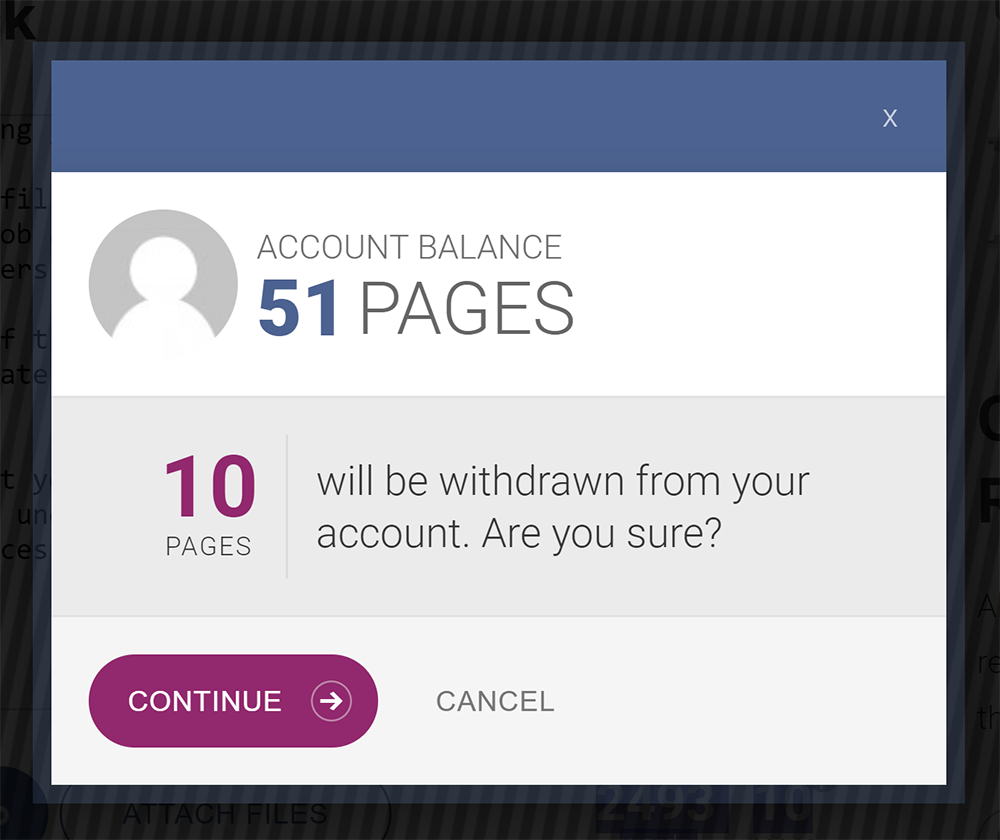
My report correctly found that the article was copied from my website. It gave a plagiarism rating of 98.25% and an option to download the report in pdf format.
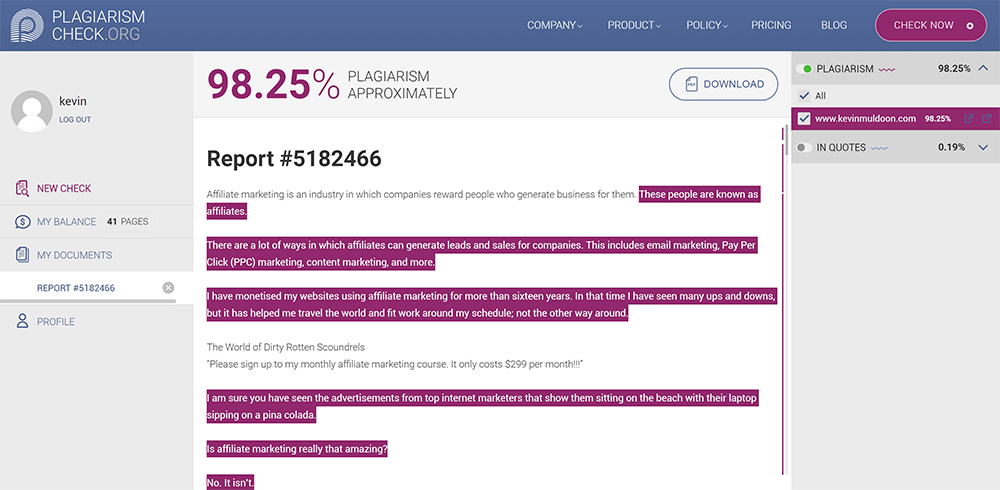
It’s no surprise that PlagiarismCheck.org discovered that the article I posted was from my blog as I copied it over word for word, however I wanted to see how the service dealt with a more difficulty task.
So I ran the same article through one of those poor content spinners that you find online. Despite the fact the spun article was illegible, the report still found that the article had been copied from my blog and gave a plagiarism score of 42.66%.
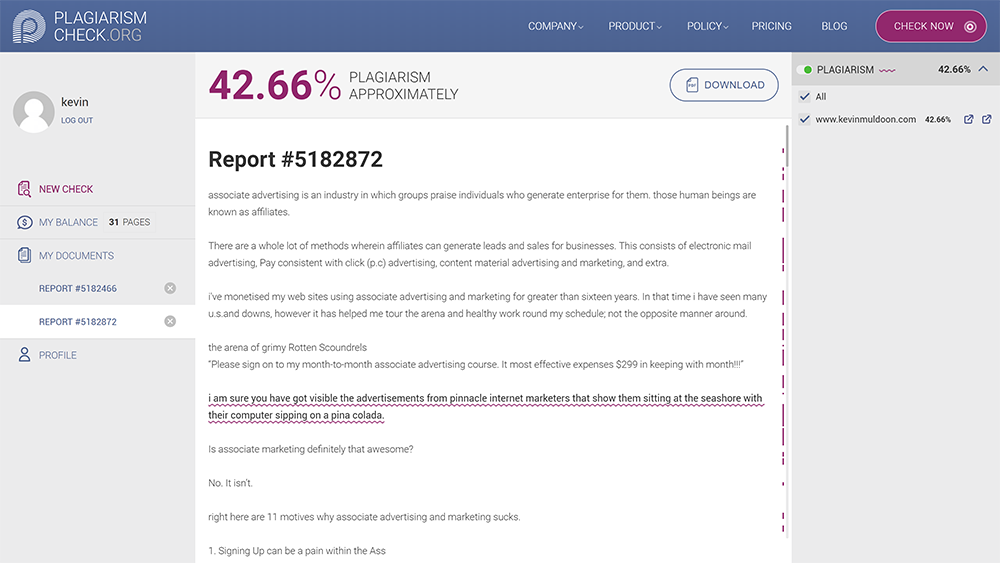
I was really impressed that the spun article was discovered to be plagiarised from my blog as it the article was complete nonsense and impossible to read.
PlagiarismCheck.org Pricing
PlagiarismCheck.org has three pricing plans. The plans are not billed on a monthly basis. Instead, you buy a set number of pages in advance.
The light package costs $5.99 and gives you 20 page checks. The standard package at $9.99 offers 50 checks and the premium package at $25.49 gives 150 checks. This works out at $0.30, $0.20, and $0.17 per page, respectively (at a rate of 275 words per page).
All packages offer you 24/7 support.
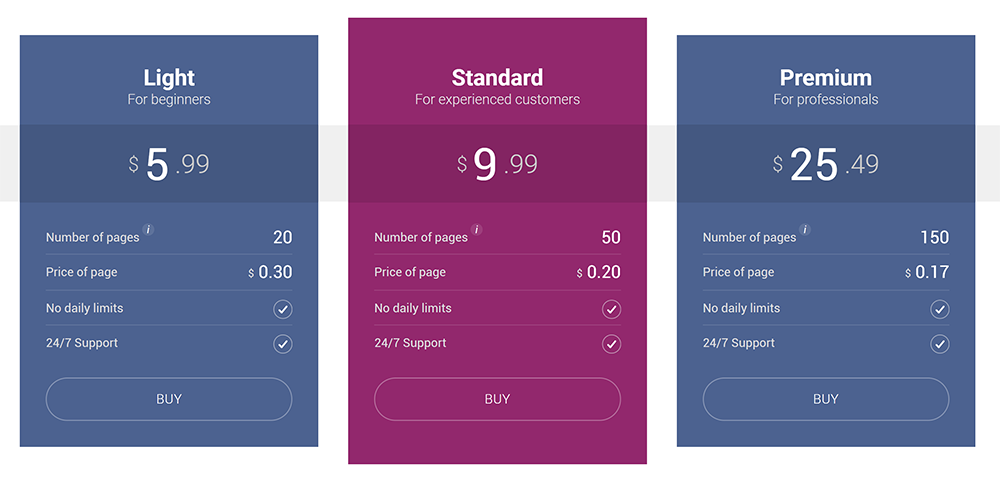
All packages come with a seven day money back guarantee that allows you to get a full refund if you are not satisfied.
Final Thoughts
Plagiarism remains a major issue in education and for website owners and bloggers. If you accept guest posts on your blog or hire people to write for you, chances are you have had an article set to you that was plagiarised.
PlagiarismCheck.org is a fantastic tool for verifying the validity of articles. The solution is quick and it is highly effective.
I recommend checking it out if you are looking for a way to test the authenticity of content.
Thanks for reading.
Kevin
* I was paid to check out Hosting24, however paid reviews are no guarantee of a positive review. They only guarantee that I will look at the service and do an honest review. Please visit my advertising page for more information.

